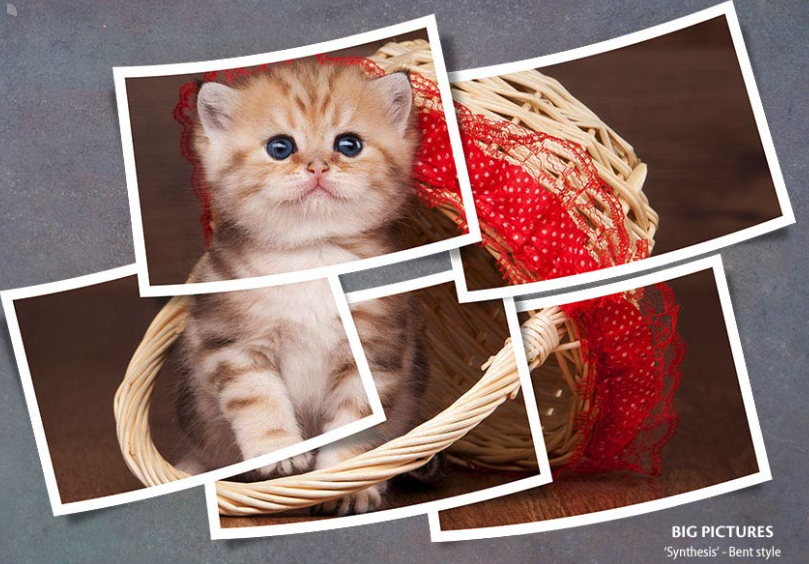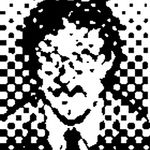- Home
- Illustrator
- Discussions
- Re: How to quickly simulate a printed photo
- Re: How to quickly simulate a printed photo
Copy link to clipboard
Copied
Dear friends,
newbie here struggling, but LOVING Illustrator 🙂
I have a project that needs placing a dozen of images on a page and have them look like printed photos staggered on that page, so I THINK I need to:
- Generate a white rectangle slightly larger (say 3 pixels) than the image (all of which are of different sizes).
- Generate a drop shadow of this rectangle
- Place the image over the rectangle
- Transform it in one single object to move it and rotate it slightly
I think I should be able to do the later steps but not sure on how to quickly achieve the first one. Is there a way to draw a rectangle centered on the underlying image and make it say 3 pixels wider automatically ?
Thank you very much in advance.
Illustrator 2017 on a Mac with Sierra.
 1 Correct answer
1 Correct answer
In Illustrator you could create a graphic style. There are a couple of ways to make that. Here is one way:
- Place a photo and select it
- In the Appearance palette add a new white fill and drag that fill below the raster image item
- Apply Effect > Path > Outline Object to the white fill
- Apply Effect > Path > Offset Path to the white fill. Choose your desired offset value.
- Apply Effect > Stylize > Drop Shadow to the white fill
Save that appearance set as a graphic style (see Graphic Styles palett
...Explore related tutorials & articles
Copy link to clipboard
Copied
This task is better suited for Photoshop.
Panos used to have an actions for this.
Copy link to clipboard
Copied
Yould use the Appearance panel to add a new fill below the image.
Convert the fill into a rectangle using Effects > Convert to Shape > Rectangle..
Apply a drop shadow below the Rectangle effect: Effects > Stylize > Drop Shadow...
Create a Graphic style and apply it to placed images.
Before rotating use Object > Expand Appearance

Copy link to clipboard
Copied
Hi there Ton,
I don't know how to revert the "Correct answer" action since after I used it for the other AI based reply I tried your "recipe" and found it even better for my task.
Thank you very much.
I guess I have to study more and understand about the workings in the appearance panel since at the beginning I struggled a bit.
Take care.
Copy link to clipboard
Copied
Thank you Roberta, but I think you marked Kurt's solution correctly as the correct answer.
It is more flexible; you don't need to expand the appearance and the dropshadow rotates correctly with the rotation of the image.
Copy link to clipboard
Copied
In Illustrator you could create a graphic style. There are a couple of ways to make that. Here is one way:
- Place a photo and select it
- In the Appearance palette add a new white fill and drag that fill below the raster image item
- Apply Effect > Path > Outline Object to the white fill
- Apply Effect > Path > Offset Path to the white fill. Choose your desired offset value.
- Apply Effect > Stylize > Drop Shadow to the white fill
Save that appearance set as a graphic style (see Graphic Styles palette). Then place and select all your photos and apply the graphic style in one whack. Rotate the photos as desired.
Copy link to clipboard
Copied
But may I ask Kurt why this step:
- Apply Effect > Path > Outline Object to the white fill
What is its purpose in this sequence? Would Roberta not produce the same outcome without it?
Copy link to clipboard
Copied
JamArtz schrieb:
But may I ask Kurt why this step:
- Apply Effect > Path > Outline Object to the white fill
What is its purpose in this sequence? Would Roberta not produce the same outcome without it?
You wouldn't even see the white rectangle without it. You can just try it out.
Copy link to clipboard
Copied
Quite right, Monika. And trying it myself reveals how ignorant I am about the Outline Object Effect's powers. I have used it only to better align a text object on the page, never as Kurt recommends it here.
I've also just searched around for an explanation of the Effect when applied objects other than text. My search skills surely are deficient, but I can't find a good explanation of its purposes (Teri Petit's sample file from the Dark Ages won't download for me, and Illustrator's Help files explain little to me).
Can I trouble you for a current reference to information… or your own explanation? Thanks.
Copy link to clipboard
Copied
JamArtz schrieb:
I've also just searched around for an explanation of the Effect when applied objects other than text.
Apply the effect and then expand appearance.
Make another object for comparison where you don't apply the effect.
Then compare the results. Using this method you can find out how every effect works.
Copy link to clipboard
Copied
Good advice. I've taken it. Of course you're managing to make me feel more inept even than I am! ![]()
I made several tests with many objects. I made simple objects, added fills, strokes, applied effects, grouped some objects, overlapped some objects, copied objects and applied Outline Object to one set, expanded the appearance of them and their (unoutlined) copies.
I am simply not seeing a difference with the effect (other than in Kurt's example)! Neither when I apply the effect nor when I expand the object. And yet clearly, Kurt's instructions above to include Outline Object on the white fill for the framed photo effect is essential. I can see how the white lower fill won't be seen without the effect applied. But what is that effect ACTUALLY doing!? Why is it making the white fill visible so it can receive and display the drop shadow? I discovered it has nothing to do with the fill being white. No lower fill will display without outline object applied, no matter the color applied.
To further confuse me, if I replicate Kurt's steps using a simple vector object instead of a linked or imported photo, I can apply white (or any color) and a drop shadow to a lower fill and see both fill and shadow without the outline object effect. Why is that?
And what in the world does any of this have to do with tightening the boundary around a type object, which the effect also does?!
I am obviously clueless about this effect and don't wish to burden you or others if I can read about it on my own. I will keep searching for a clear resource, and in the meantime, if someone is willing to shed more light on this effect, obviously I'm all very appreciative ears.
Copy link to clipboard
Copied
The effect makes a path out of something that isn't a path. So for text it does the same as "Type > Convert to paths" (or whatever that is in English - I'm too lazy to look it up). But as an effect of course it does this only virtually, so you can still edit the text.
The boundary around the type object only gets tighter when you additionally check "Use preview bounds", because only then the result of the effect determines the size of the bounding box.
As for the photo: Outline object outlines it and makes it a "virtual" path and only then you can apply a fill that is also visible. Without the effect, the fill is just a point and therefore so small that you can't see it.
"Convert to shape" does something similar, but it can only do rectangles or ellipses, not a freeform shape.
Copy link to clipboard
Copied
"Makes a path out of something that isn't." OK, but isn't an additional fill a path (virtual until expanded of course)? It certainly is if applied to a simple vector object, no? With a simple object, I can add color to it, apply effects to it, transform it and so on. I don't need to apply Outline Object to that additional fill to make it (and all that's applied to it) visible, right?
Asked another way, why do I need to "make a path" out of Kurt's white fill behind the photograph with Outline Object if I don't need to apply Outline Object to a second fill added to a simple vector path? Where is the difference there? Is it somehow because the photograph is not ITSELF a path?
If Convert to Shape does something similar (make a path out of something that isn't), why wouldn't Offset Path make a path out of something that isn't? Why wouldn't Offset Path be sufficient in the same way Ton's Convert to Shape is sufficient? Does this have to do with Teri Petit's pre- and post-effects?
I do understand that Outline Object virtually converts type to outlines. This makes more sense to me, as type is a fundamentally different kind of object than an additional fill added in the appearance panel.
Oh well, thank you Monika for trying to get this through my skull. Lazy is certainly not a word I would use to describe you of all people! Nor am I lazy by the way. I'll keep working at this until I figure it out. Old dogs can indeed learn new tricks.
Copy link to clipboard
Copied
Just a historical or nostalgic addition: The Outline Object effect in combination with an additional fill and the Offset Path effect once was the only speedy way to apply correct Drop Shadow effects to transparent raster images as the Outline Object effect was (and still is) able to detect transparent (or non-transparent) areas inside transparent raster images.
You can still create an appearance set to see how those drop shadows could be done in former times (Illustrator 9, 10 and probably the first version of Illustrator CS as well).
For example, draw a filled heart, then draw a filled circle on top of the heart, select both and create a compound path.
Go to Object > Rasterize and choose the Transparent Background option in the Rasterize dialog.
Add a new fill to the rasterized heart with a hole and drag that fill below the image item in the Appearance palette.
Apply the Outline Object effect to the additional fill, then apply the Offset Path effect to the fill and take a small negative offset value (-0,5 mm for example).
Apply the Drop Shadow effect to the fill. Save the entire appearance set as a graphic style, so that you can apply nostalgic shadows to other transparent raster images in the future.
Copy link to clipboard
Copied
Sorry for perseverating on this topic. Three questions:
1. Back to your instructions, Kurt, is it possible that the only reason I need to use the Outline Object Effect on that white added fill behind the photo is because the base object is a raster image? (I'm now guessing that because I don't need the effect when the base image is a vector object.)
2. Am I correct that your instructions will only work when the photo is embedded? I can't seem to make them work if the image is linked.
3. Are there other objects or appearances that Outline Object has a useful effect on in addition to images and type objects?
Thank you for your patience.
Copy link to clipboard
Copied
Reading the beautiful word 'perseverating' coerced me into finding out what that means. Now I know. Thanks for introducing this term.
I don't know if I can answer your inquisitive questions satisfactorily, but for what it's worth:
1. Yes, that's the reason. Moreover, as far as I can think or assume, the Outline Object effect was originally dedicated to transparent raster images in order to detect and outline transparent or non-transparent areas in those images. The fact that the effect also affects the behaviour of bounding boxes when you apply it to type objects may be just a secondary effect. To be sure, you would have to ask the software engineer who developed the effect (he may be retired or deceased).
2. That is more probably than not a partial truth. Have you already tried a linked .psd file?
3. Rarely. As for the example you are mentioning, to me it is rather a convoluted stopgap that may compensate the lack of pragmatic solutions to some degree. It goes without saying that you can play around to explore some other "useful" things, but I would't expect too much.
Copy link to clipboard
Copied
Needless to say, I am grateful for these confirmations, Kurt. I am cursed with frustration when I don't understand how and why an operation does what it does. You have brought me considerable relief. Who needs a software engineer when we have you?
I have tried a few times to follow your white-frame instructions with a linked image without "full" success. Specifically, I can add a fill, drag it below the image (Contents) in the Appearance panel, paint it white, apply Outline Object, apply Offset Path and apply Drop Shadow. What I get is an image with a drop shadow. What I don't get is a white border framing the image. The visual result is identical to applying a drop shadow to the image directly, without an additional, white-painted, offset fill to mimic a snapshot frame.
So as you say, my claim that it "doesn't work" with a linked image is a partial truth.
Thanks again for your expertise and your patience. As for perseverating, I bet the only people familiar with that word are the troubled ones who are disposed to do it!
Copy link to clipboard
Copied
The partial truth assumption was probably just an aberration on my part. I was thinking about partially transparent linked images. With them it should work. Well, partially.
The reason why it doesn't work with plain linked images is because behind the linked curtains an encapsulated, but not detectable nor selectable clipping path is already there. It protects the image from being visually affected by the Offset Path appearance. You can verify that by expanding the appearance and taking a look at the Layers palette.
Not sure what it is that whispers in my ears that this Outline thing may not be the most urgent challenge on this planet at the moment.
Copy link to clipboard
Copied
I'm quite sure I do know exactly what whispers in your ears about the relative unimportance of Outline Object on a planet confronting far darker challenges. Rest assured my ears are being whispered into too.
Thank you, Kurt.
Copy link to clipboard
Copied
Thank VERY MUCH for your very helpful suggestions !
Copy link to clipboard
Copied
For my part you are welcome. Did you try big pictures?
Last time I ran this was really nice, as you could select a few pictures in bridge and run. Later you could move the layers around if you wanted to edit in layered .psd file.

Copy link to clipboard
Copied
Thank you Mike but I do not own/use Photoshop
Find more inspiration, events, and resources on the new Adobe Community
Explore Now


